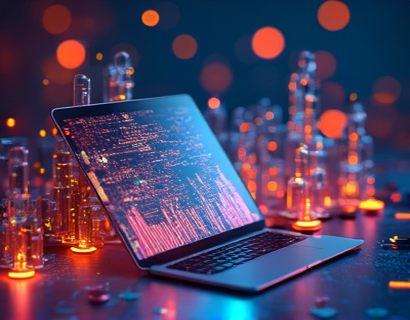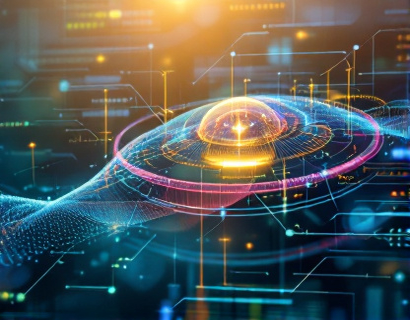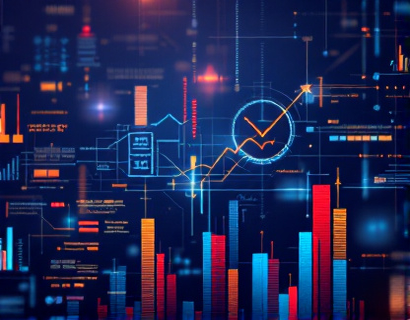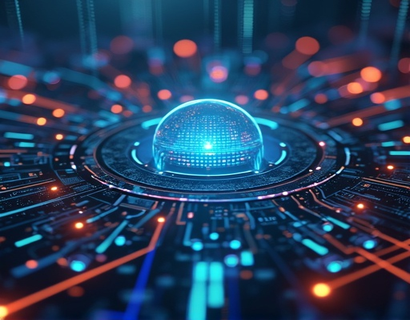The Synergy of AI and Crypto: Revolutionizing Digital Experiences
The intersection of artificial intelligence and cryptocurrency is giving rise to a new era of digital transformation, where seamless integration and advanced solutions are redefining user experiences. This fusion is not just about combining two cutting-edge technologies but about creating a holistic ecosystem that enhances the way we interact with digital services. For tech enthusiasts and innovators, this synergy opens up a world of possibilities, offering insights into the future of connected technologies.
The integration of AI and crypto is transforming the way applications and services operate, providing more intuitive, secure, and efficient interactions. AI's ability to process vast amounts of data and learn from patterns is complemented by crypto's decentralized and secure nature, creating a powerful combination that can revolutionize various sectors, from finance to healthcare and beyond.
Enhanced Security Through AI and Crypto
One of the most significant benefits of combining AI and crypto is the enhancement of security measures. Traditional security protocols are often static and can be vulnerable to sophisticated cyber attacks. AI, with its dynamic learning capabilities, can detect and respond to threats in real-time, adapting to new patterns of malicious activity. When integrated with blockchain technology, which underpins most cryptocurrencies, this creates a nearly impenetrable defense mechanism.
For instance, AI-driven systems can monitor blockchain transactions for unusual activity, flagging potential fraud before it occurs. Smart contracts, self-executing contracts with the terms directly written into code, can be enhanced with AI to automatically adjust conditions based on real-time data, ensuring that all parties adhere to the agreed terms while minimizing the risk of manipulation.
Personalized User Experiences
The fusion of AI and crypto is also transforming how applications personalize user experiences. AI algorithms can analyze user behavior, preferences, and patterns to deliver tailored content and services. In the context of cryptocurrency, this means that users can enjoy a more customized and efficient experience when interacting with crypto platforms and services.
For example, a crypto trading platform powered by AI can analyze a user's trading history and market trends to provide personalized recommendations and alerts. This not only enhances the user experience but also helps in making more informed investment decisions. Moreover, AI can optimize the user interface based on individual preferences, making the platform more intuitive and user-friendly.
Streamlined Transactions and Payments
AI and crypto are revolutionizing the way transactions are processed and payments are made. Traditional payment systems are often slow, expensive, and centralized, making them susceptible to failures and hacks. The combination of AI and blockchain offers a faster, cheaper, and more secure alternative.
AI can optimize the routing of transactions across the blockchain network, reducing congestion and lowering transaction fees. Machine learning algorithms can predict network traffic and adjust transaction priorities accordingly, ensuring that critical transactions are processed promptly. This is particularly beneficial for cross-border payments, where traditional systems can take days and incur high fees.
Furthermore, AI-powered wallets can learn user spending habits and automate transactions, such as setting up recurring payments or alerting users to potential savings opportunities. This level of automation not only saves time but also enhances the overall user experience.
Decentralized Applications and AI
Decentralized applications (dApps) are at the forefront of the crypto revolution, offering users greater control and privacy. AI plays a crucial role in enhancing the functionality and usability of these applications. By integrating AI, dApps can offer more sophisticated features and better user interactions.
For instance, AI can power chatbots within dApps, providing 24/7 customer support and assistance. These chatbots can understand natural language queries and provide accurate responses, enhancing user engagement. Additionally, AI can be used to analyze data from various sources within the dApp, offering insights and recommendations to users based on their activities and preferences.
AI-driven analytics can also help developers improve dApps by identifying areas of improvement and optimizing performance. This continuous feedback loop ensures that dApps remain relevant and user-friendly, fostering a more robust decentralized ecosystem.
Supply Chain Transparency and Efficiency
The supply chain industry is another area where the combination of AI and crypto is making a significant impact. By leveraging blockchain for transparency and AI for optimization, companies can create more efficient and trustworthy supply chains.
Blockchain provides an immutable and transparent ledger of transactions, ensuring that every step of the supply chain is recorded and verifiable. AI can analyze this data to identify bottlenecks, predict delays, and optimize logistics. Smart contracts can automate payments and ensure compliance with contractual obligations, reducing the need for intermediaries and lowering costs.
For example, a food supply chain can use blockchain to track the origin and journey of products, ensuring food safety and authenticity. AI can analyze this data to predict demand, optimize inventory levels, and reduce waste. This not only enhances efficiency but also builds trust with consumers who value transparency.
Healthcare Innovations
In the healthcare sector, the integration of AI and crypto is paving the way for more secure, efficient, and patient-centric solutions. Patient data is highly sensitive, and ensuring its security and privacy is paramount. Blockchain provides a secure and decentralized way to store and share medical records, while AI can analyze this data to improve diagnostics and treatment plans.
AI-powered diagnostic tools can analyze medical images, patient histories, and genetic data to provide accurate and timely diagnoses. These tools can be integrated with blockchain to ensure that patient data is securely shared between healthcare providers, enhancing collaboration and care coordination. Smart contracts can automate insurance claims and reimbursements, streamlining the process and reducing administrative burdens.
Moreover, AI-driven telemedicine platforms can offer personalized health advice and monitoring, leveraging blockchain to secure patient data and ensure compliance with privacy regulations. This combination not only improves healthcare outcomes but also empowers patients to take a more active role in their health management.
Financial Inclusion and Accessibility
The combination of AI and crypto has the potential to drive financial inclusion and accessibility, particularly in underserved regions. Traditional financial systems often exclude large portions of the population due to high costs and complex regulations. Cryptocurrency, powered by AI, can provide a more accessible and affordable alternative.
AI can help in creating more user-friendly crypto interfaces, making it easier for non-technical users to engage with digital currencies. Machine learning algorithms can analyze user behavior to offer tailored financial services, such as microloans and savings plans, based on individual needs and creditworthiness. This can empower individuals and small businesses to participate in the global economy.
Furthermore, AI-driven KYC (Know Your Customer) processes can simplify the onboarding of new users, reducing the friction often associated with traditional financial services. By automating identity verification and compliance checks, these processes can be completed more efficiently and at a lower cost.
Challenges and Considerations
While the potential of AI and crypto is vast, there are several challenges and considerations that need to be addressed. Regulatory frameworks are still evolving, and the lack of clear guidelines can create uncertainty for developers and users alike. Ensuring compliance with existing laws while innovating within the crypto space is crucial.
Another challenge is the technical complexity involved in integrating AI with blockchain systems. Developers need to possess a deep understanding of both technologies to create robust and secure applications. Education and training programs can help bridge this gap, fostering a community of experts who can drive this innovation forward.
Privacy concerns also need to be carefully managed. While blockchain offers transparency, it can also expose sensitive information if not properly secured. AI can help in anonymizing data and implementing privacy-preserving techniques, but it is essential to stay vigilant and adapt to new threats.
Conclusion
The fusion of AI and crypto is transforming digital experiences, offering a more secure, personalized, and efficient way to interact with technology. For tech enthusiasts and innovators, this synergy represents a frontier of endless possibilities, driving the next wave of digital innovation. As these technologies continue to evolve, the potential for creating a more connected and empowered world becomes increasingly tangible.











































